- Home
- Isaac Asimov
Gold: The Final Science Fiction Collection Page 16
Gold: The Final Science Fiction Collection Read online
Page 16
Nothing much might have happened in consequence, for wild reports about all sorts of things reach the news media every day and then fade out. In this case, though, the report attracted the attention of Raymond A. Palmer, who was then the editor of the science fiction magazine Amazing Stories.
Palmer may not himself have been a piece of broken pottery, but he was certainly not averse to building circulation by means of items that appealed to crackpots. He had shown this in his earlier work on something completely wacky that he called “The Great Shaver Mystery.”
Now he took up flying saucers and single-handedly promoted them into an international mania. That is one connection (an important one) between flying saucers and science fiction.
Mind you, I have a soft spot in my heart for Ray Palmer. Way back in 1938, he bought the first science fiction story I ever sold, and sent me the very first check I ever earned as a professional writer.
Nevertheless, candor compels me to state that for years after this noble deed of his I never had occasion to believe a word he said.
At the other extreme of the flying saucer spectrum is professor J. Allen Hynek. He is a respectable and learned scientist who has spent decades examining the evidence and who remains firmly convinced that there is something there. He doesn’t accept the extraterrestrial spacecraft hypothesis, but he thinks that something mysterious underlies the phenomenon, which, if understood, may revolutionize science.
However, in all the years he’s been investigating the phenomenon, he’s come up with-nothing! Far from revolutionizing science, his work has not added one even marginal item to the world of physical science.
Then what am I doing helping edit this anthology?
That brings us to the second connection between flying saucers and science fiction. The whole concept of flying saucers-the whole notion of thousands upon thousands of spaceships hovering about us without ever seeming to do anything or to affect us in any way-has supplied science fiction writers with an endless supply of story material.
All of us have written flying saucer stories. I have myself, and one of them is included in this book.
Generally, we have to deal with a situation in which extraterrestrial spacecraft visit us, but keep out of sight for some reason, or decide not to do anything for some reason, or try to do something and fail for some reason, or fail to manage to convince Earthpeople they are real for some reason.
You see, science fiction writers, being sane and rational, have to find some reason for so many spaceships doing nothing. Usually the results turn out to be funny, satiric or ironic; sometimes tragic. Very often, they prove to be stories that are entertaining and good-so what we have done is to collect a sizable number of them into one book for your delectation.
Come, see for yourself that every cloud has a silver lining, and that even the silliest notions can undergo a sea change into something rich and strange in the hands of skilled science fiction writers.
Invasion
Invasion is undoubtedly as old as humanity. Hunting groups must occasionally have encountered each other, if only by accident. Each side must have felt the other was invading. The obviously weaker side would have had to decamp. If the matter were not obvious, there might have been threats or even a brief struggle to settle the matter.
Once agriculture became a way of life and farmers were pinned in place by their farms and food stores, these same food stores became an overwhelming temptation to surrounding nomads; invasions were more terrible because farmers could not flee but had to stand and fight.
We begin to have records of early civilizations suddenly inundated and taken over by raiders. The Sumerians were taken over by Gutian invaders as early as 2200 B.C. The Egyptians fell under the grip of the Hyksos invaders soon after 1700 B.C. We can go through an endless list of such things.
Considering that those people who were invaded (until quite recent times) had little knowledge of the world outside the boundaries of their own cultures, the invasions must usually have come as unbelievable shocks, as a sudden influx of the unknown from the unknown. This would be especially so when the invaders spoke strange languages, wore strange clothes, had strange ways, and even, perhaps, have looked odd.
As the most recent example of our cultural ancestors being subjected to the horror of an unexpected invasion, we need only go back to 1240, when the Mongols (short, squat, slant-eyed) swept into Europe on their hardy desert mounts. Europe knew nothing about them, had no way of knowing they were on the way (they had been ravaging Asian kingdoms for twenty years). All they knew were that these terrible horsemen, moving with incredible speed and organization, winning every battle, smashed Russia, Poland, Hungary, and were penetrating Germany and reaching for Italy, all in a matter of a single year. And then they left and raced eastward again, smashing Bulgaria en route. (They left because their khan had died back in Mongolia and the army had to be there for the election of a successor. Nothing the Europeans could have done would have stopped them.)
But the Mongols were “the last of the barbarians.” Partly because of the Mongolian empire that was set up, communications between China and Europe became smoother. Such things as printing, the magnetic compass, and (most of all) gunpowder, leaked westward from China, and these things-for some reason not exploited by the technologically more advanced Chinese-were put to amazing use by Europeans.
And beginning about 1420, the tide of invasion was reversed. The “civilized” Europeans, with their ships and their guns, fell upon the coastlines of all the continents and, eventually, penetrated the interiors until Europe dominated the world politically and militarily (and as it still does, even today, culturally.)
But how did the non-Europeans feel about it? How about the Africans who watched the Portuguese ships come from nowhere and carry them off as slaves; the Asians who watched Portuguese, Dutch, and English ships come in set up trading posts, skim off profits and treat them as inferiors; the Native Americans who watched the Spanish ships come in and take over and destroy their civilizations? There must have been the feeling of monsters arriving from some other world.
All invasions, however, at least of the kind I’m discussing, were by human beings. However strange they might have seemed-Mongols to Europeans, or Spaniards to Incas-they were clearly human beings. (There were also invasions of infestations of non-human types-rats, locusts, the plague bacterium of the Black Death, the AIDS virus-but these fall outside the subject matter of this introduction, and even they were forms of terrestrial life.)
What if, however, the invaders were intelligent beings who were not human and, in fact, not Earthly. The possibility did not seriously arise until the time when it was thoroughly recognized that the planets were other worlds and that the universe might be full of still other planets outside the domain of our own sun.
At first, other worlds were the subject of “travel tales.” Human beings went to the moon (as early as the second century A.D. in fiction and more frequently as time went on), but there are no tales I can think of in which the inhabitants of the moon came to Earth.
In 1752, the French satirist Voltaire wrote Micromegas, in which visitors from Saturn and Sirius observe the Earth, but this cannot be taken literally. The visitors are merely Voltaire’s device for having Earth viewed with apparent objectivity from without in order to have its follies and contradictions made plain.
But then in 1877, there was the discovery of thin, dark markings on Mars. This was interpreted by some as “canals” and the American astronomer Percival Lowell was convinced that they were artificial waterways built by intelligent beings trying to use the ice of the polar caps to maintain agriculture on their increasingly desiccated planet. He wrote books on the subject in the 1890s that created quite a stir.
The British science fiction writer Herbert George Wells proceeded to make use of the notion and, in 1898, published The War of the Worlds, the first significant tale of the invasion and attempted conquest of Earth by more advanced intelligences from another worl
d (in this case, Mars). I have always thought that Wells, in addition to wanting to write an exciting story with an unprecedented plot, was also bitterly satirizing Europe. At the time he wrote, Europeans (the British, particularly) had just completed dividing up Africa without any regard for the people living there. Why not show the British how it would feel to have advanced intelligences treat them as callously as they were treating the Africans?
Wells’s novel created a new subgenre-tales of alien invasion. The manner in which Wells made the Martians unpitying exploiters of humanity (for the sake of excitement and, I believe, satire); the memory, perhaps, of the Mongol invasion; the feeling of guilt over the European despoliation of all the other continents; combined to make it conventional to have the alien invaders unfeeling conquerors, for the most part.
Actually, we have no reason to think this would be so. As far as we know, no invaders from without have ever reached Earth and, for a variety of reasons, it might be argued that none ever will.
However, if they do come, there is no a priori reason to suspect they won’t come in friendship and curiosity, to teach and to learn.
Yet such is the power of humanity’s own shameful history and the conventions of fiction that very few people would be willing to consider alien invaders coming in peace as a real possibility. In fact, when plaques and recordings were placed on rocket probes designed to leave the solar system and go wandering off into interstellar space, in order that alien intelligences (if any) might find them someday, millions of years in the future, and that they might thus learn that Earthmen had once existed-there were those who thought it a dangerous process. Why advertise our existence? Why encourage ferocious aliens to come here in order to ravage and destroy?
Here, then, in this collection, are stories of alien invasion. We have selected a variety of contemporary treatments of the problem, some a matter of excitement, some thoughtfully philosophic, some even funny. They view the possibility from all angles and stretch our minds on the matter, as good science fiction should.
The Science Fiction Blowgun
In science fiction, experience seems to show that long stories have an advantage over short ones. The longer the story, all things being equal, the more memorable.
There is reason to this. The longer the story, the more the author can spread himself. If the story is long enough, he can indulge himself in plot and subplot with intricate interconnections. He can engage in leisurely description, in careful character delineation, in thoughtful homilies and philosophical discussions.
He can play tricks on the reader, hiding important information, misleading and misdirecting, then bringing back forgotten themes and characters at the moment of greatest effect.
But in every worthwhile story, however long, there is a point. The writer may not consciously put it there, but it will be there. The reader may not consciously search for it, but he’ll miss it if it isn’t there. If the point is obtuse, blunt, trivial or nonexistent, the story suffers and the reader will react with a deadly, “50 what?”
Long, complicated stories can have the point well hidden under cloaking layers of material. Academic people, for whom the search for the point is particularly exciting, can whip their students to the hunt, and works of literature that are particularly deep and rich can elicit scholarly theses without number that will deal with the identification and explanations of points and subpoints.
But now let’s work toward the other extreme. As a story grows shorter and shorter, all the fancy embroidery that length makes possible must go. In the short story, there can be no subplots; there is no time for philosophy; what description and character delineation there is must be accomplished with concision.
The point, however, must remain. Since it cannot be economized on, its weight looms more largely in the lesser overall bulk of the short story.
Finally, in the short short story, everything is eliminated but the point. The short short story reduces itself to the point alone and presents that point to you like a bare needle fired from a blowgun; a needle that can tickle or sting and leave its effect buried within you for a long time.
Here, then, are some points made against the background and with the technique of science fiction.
A hundred of them, to be exact, each from the science fiction blowgun of a master (to be modest, there are also a couple of my own stories), and each with a one-line introductory blurb by myself.
Now, since it would make no sense to have an introduction longer than the stories it introduces, and having made my point-I’ll stop.
The Robot Chronicles
What is a robot? We might define it most briefly and comprehensively as “an artificial object that resembles a human being.”
When we think of resemblance, we think of it, first, in terms of appearance. A robot looks like a human being.
It could, for instance, be covered with a soft material that resembles human skin. It could have hair, and eyes, and a voice, and all the features and appurtenances of a human being, so that it would, as far as outward appearance is concerned, be indistinguishable from a human being.
This, however, is not really essential. In fact, the robot, as it appears in science fiction, is almost always constructed of metal, and has only a stylized resemblance to a human being.
Suppose, then, we forget about appearance and consider only what it can do. We think of robots as capable of performing tasks more rapidly or more efficiently than human beings. But in that case any machine is a robot. A sewing machine can sew faster than a human being, a pneumatic drill can penetrate a hard surface faster than an unaided human being can, a television set can detect and organize radio waves as we cannot, and so on.
We must apply the term robot, then, to a machine that is more specialized than an ordinary device.
A robot is a computerized machine that is capable of performing tasks of a kind that are too complex for any living mind other than that of a man, and of a kind that no non-computerized machine is capable of performing.
In other words to put it as briefly as possible:
robot = m achine + computer
Clearly, then, a true robot was impossible before the invention of the computer in the 1940s, and was not practical (in the sense of being compact enough and cheap enough to be put to everyday use) until the invention of the microchip in the 1970s.
Nevertheless, the concept of the robot-an artificial device that mimics the actions and, possibly, the appearance of a human being-is old, probably as old as the human imagination.
The ancients, lacking computers, had to think of some other way of instilling quasi-human abilities into artificial objects, and they made use of vague supernatural forces and depended on godlike abilities beyond the reach of mere men.
Thus, in the eighteenth book of Homer’s Iliad, Hephaistos, the Greek god of the forge, is described as having for helpers, “a couple of maids…made of gold exactly like living girls; they have sense in their heads, they can speak and use their muscles, they can spin and weave and do their work.” Surely, these are robots.
Again, the island of Crete, at the time of its greatest power, was supposed to possess a bronze giant named Talos that ceaselessly patrolled its shores to fight off the approach of any enemy.
Throughout ancient and medieval times, learned men were supposed to have created artificially living things through the secret arts they had learned or uncovered-arts by which they made use of the powers of the divine or the demonic.
The medieval robot-story that is most familiar to us today is that of Rabbi Loew of sixteenth- century Prague. He is supposed to have formed an artificial human being-a robot-out of clay, just as God had formed Adam out of clay. A clay object, however much it might resemble a human being, is “an unformed substance” (the Hebrew word for it is “golem”), since it lacks the attributes of life. Rabbi Loew, however, gave his golem the attributes of life by making use of the sacred name of God, and set the robot to work protecting the lives of Jews against their pers
ecutors.
There was, however, always a certain nervousness about human beings involving themselves with knowledge that properly belongs to gods or demons. There was the feeling that this was dangerous, that the forces might escape human control. This attitude is most familiar to us in the legend of the “sorcerer’s apprentice,” the young fellow who knew enough magic to start a process going but not enough to stop it when it had outlived its usefulness.
The ancients were intelligent enough to see this possibility and be frightened by it. In the Hebrew myth of Adam and Eve, the sin they commit is that of gaining knowledge (eating of the fruit of the tree of knowledge of good and evil; i.e., knowledge of everything) and for that they were ejected from Eden and, according to Christian theologians, infected all of humanity with that “original sin.”
In the Greek myths, it was the Titan, or Prometheus, who supplied fire (and therefore technology) to human beings and for that he was dreadfully punished by the infuriated Zeus, who was the chief god.
In early modern times, mechanical clocks were perfected, and the small mechanisms that ran them (“clockwork”)-the springs, gears, escapements, ratchets, and so on-could also be used to run other devices.
The 1700s was the golden age of “automatons.” These were devices that could, given a source of power such as a wound spring or compressed air, carry out a complicated series of activities. Toy soldiers were built that would march; toy ducks that would quack, bathe, drink water, eat grain and void it; toy boys that could dip a pen into ink and write a letter (always the same letter, of course). Such automata were put on display and proved extremely popular (and, sometimes, profitable to the owners).

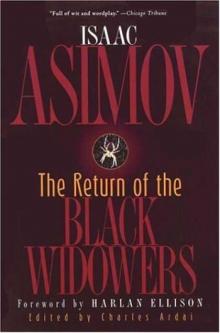 The Return of the Black Widowers
The Return of the Black Widowers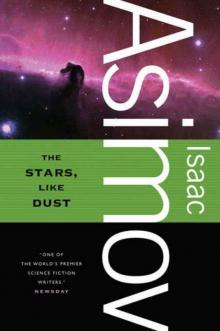 The Stars, Like Dust
The Stars, Like Dust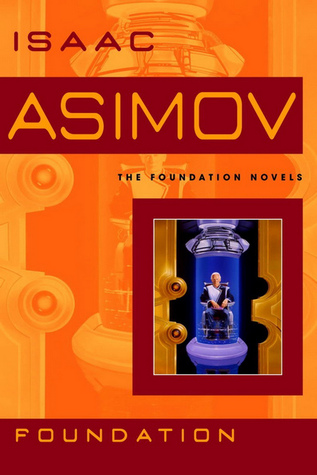 Foundation
Foundation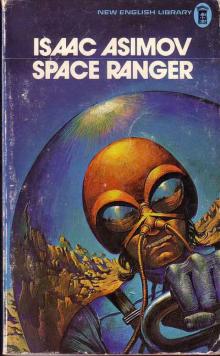 David Starr Space Ranger
David Starr Space Ranger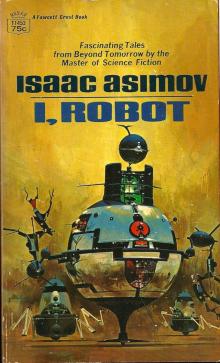 I, Robot
I, Robot Puzzles of the Black Widowers
Puzzles of the Black Widowers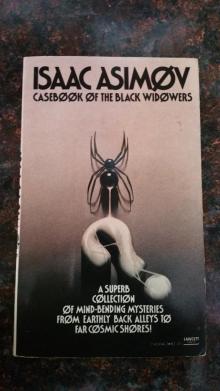 Casebook of the Black Widowers
Casebook of the Black Widowers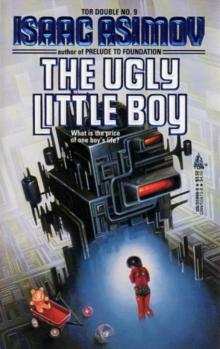 The Ugly Little Boy
The Ugly Little Boy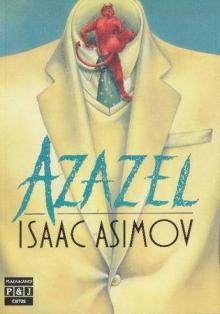 Azazel
Azazel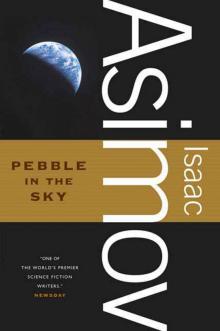 Pebble in the Sky
Pebble in the Sky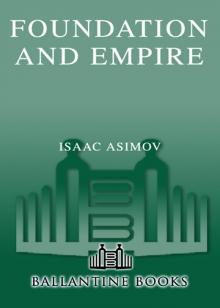 Foundation and Empire
Foundation and Empire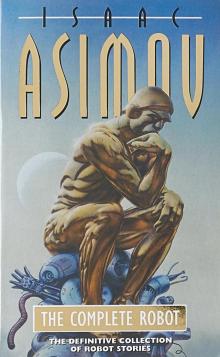 The Complete Robot
The Complete Robot Fantastic Voyage
Fantastic Voyage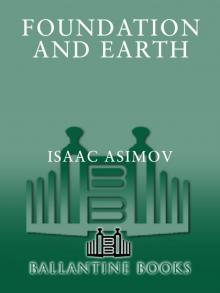 Foundation and Earth
Foundation and Earth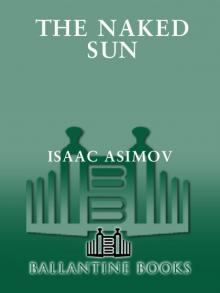 The Naked Sun
The Naked Sun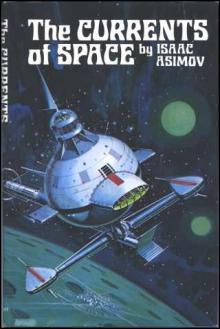 The Currents of Space
The Currents of Space Foundation's Edge
Foundation's Edge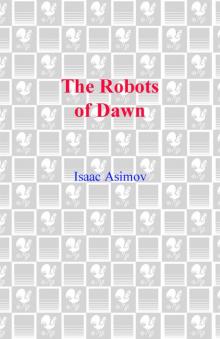 The Robots of Dawn
The Robots of Dawn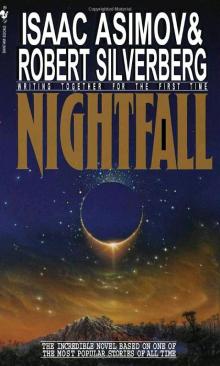 Nightfall
Nightfall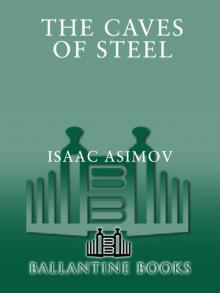 The Caves of Steel
The Caves of Steel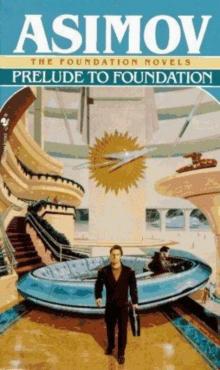 Prelude to Foundation
Prelude to Foundation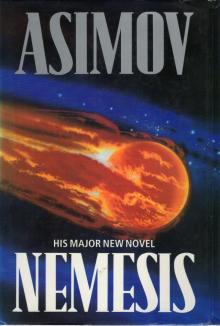 Nemesis
Nemesis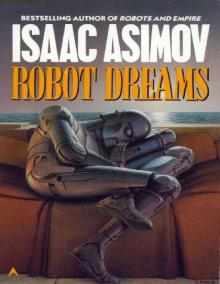 Robot Dreams
Robot Dreams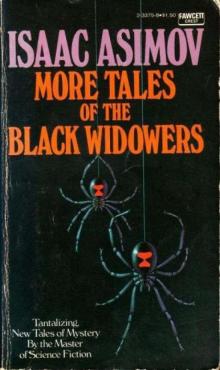 More Tales of the Black Widowers
More Tales of the Black Widowers The Complete Stories
The Complete Stories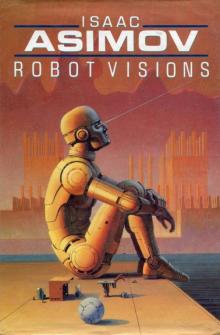 Robot Visions
Robot Visions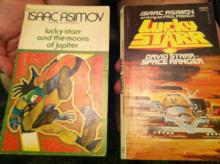 Lucky Starr And The Moons of Jupiter
Lucky Starr And The Moons of Jupiter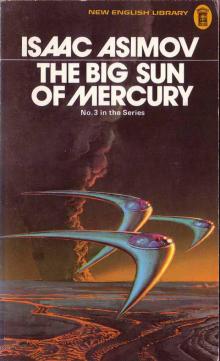 Lucky Starr and the Big Sun of Mercury
Lucky Starr and the Big Sun of Mercury The End of Eternity
The End of Eternity The Bicentennial Man and Other Stories
The Bicentennial Man and Other Stories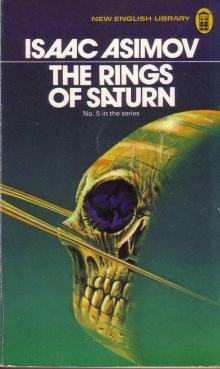 Lucky Starr And The Rings Of Saturn
Lucky Starr And The Rings Of Saturn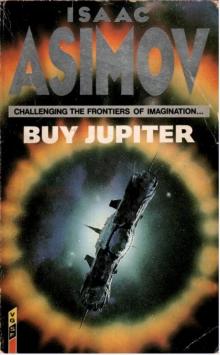 Buy Jupiter and Other Stories
Buy Jupiter and Other Stories Forward the Foundation
Forward the Foundation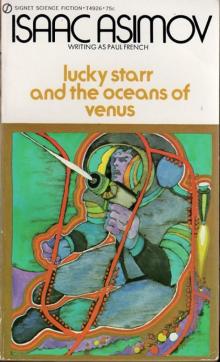 Lucky Starr and the Oceans of Venus
Lucky Starr and the Oceans of Venus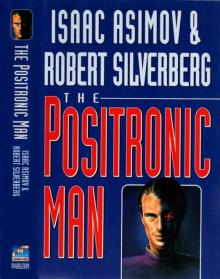 The Positronic Man
The Positronic Man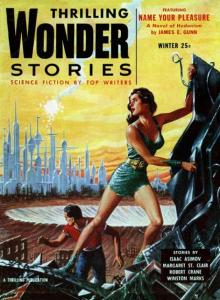 The Portable Star
The Portable Star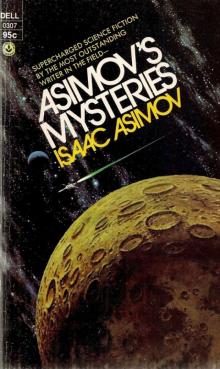 Asimovs Mysteries
Asimovs Mysteries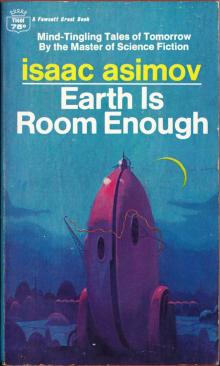 Earth Is Room Enough
Earth Is Room Enough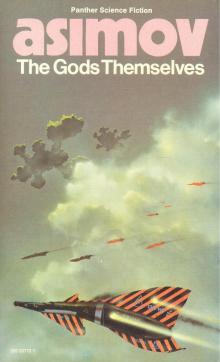 The Gods Themselves
The Gods Themselves Youth
Youth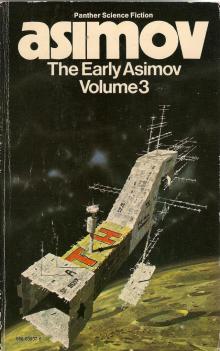 The Early Asimov Volume 3
The Early Asimov Volume 3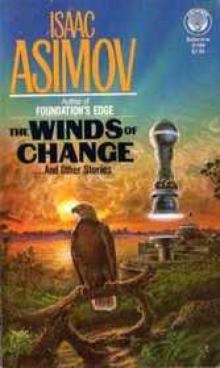 The Winds of Change and Other Stories
The Winds of Change and Other Stories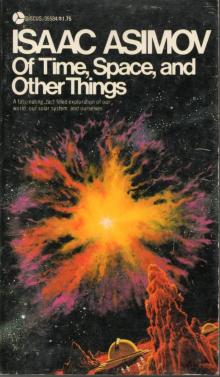 Of Time, Space, and Other Things
Of Time, Space, and Other Things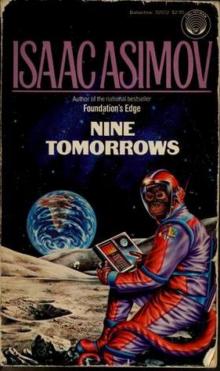 Nine Tomorrows
Nine Tomorrows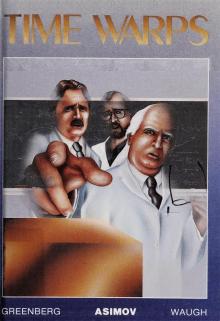 Time Warps
Time Warps Robots and Empire
Robots and Empire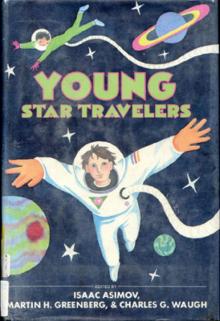 Young Star Travelers
Young Star Travelers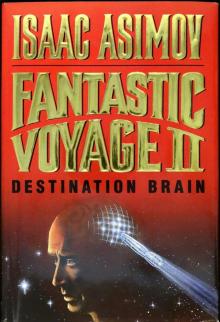 Fantastic Voyage II: Destination Brain
Fantastic Voyage II: Destination Brain Second Foundation
Second Foundation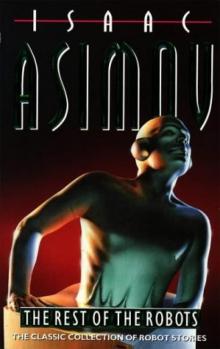 The Rest of the Robots
The Rest of the Robots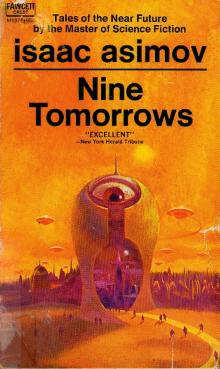 NINE TOMORROWS Tales of the Near Future
NINE TOMORROWS Tales of the Near Future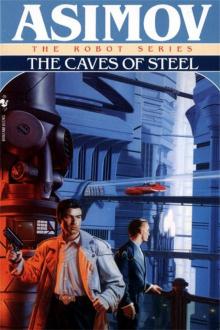 Daneel Olivaw 1 - The Caves of Steel
Daneel Olivaw 1 - The Caves of Steel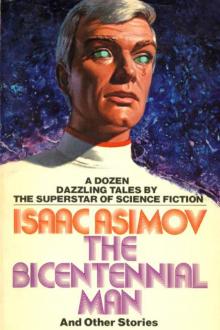 THE BICENTENNIAL MAN
THE BICENTENNIAL MAN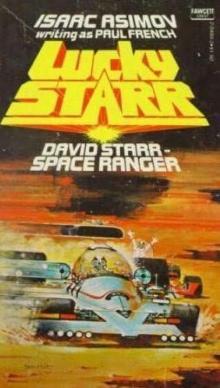 David Starr Space Ranger (lucky starr)
David Starr Space Ranger (lucky starr)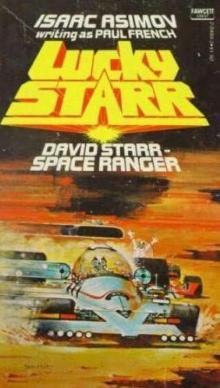 David Starr Space Ranger (ls)
David Starr Space Ranger (ls)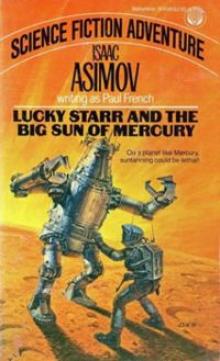 Lucky Starr And The Big Sun Of Mercury ls-4
Lucky Starr And The Big Sun Of Mercury ls-4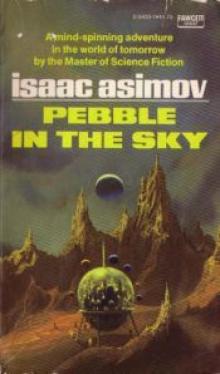 Pebble In The Sky te-1
Pebble In The Sky te-1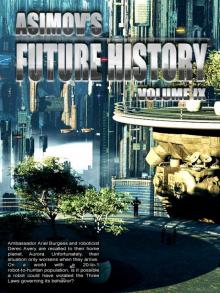 Asimov’s Future History Volume 9
Asimov’s Future History Volume 9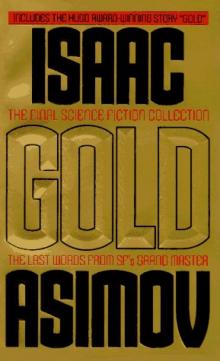 Gold: The Final Science Fiction Collection
Gold: The Final Science Fiction Collection Foundation and Earth f-7
Foundation and Earth f-7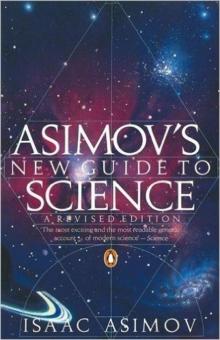 Asimov's New Guide to Science
Asimov's New Guide to Science STORM OVER WARLOCK
STORM OVER WARLOCK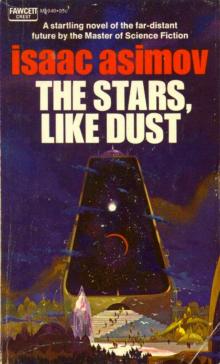 Stars, Like Dust
Stars, Like Dust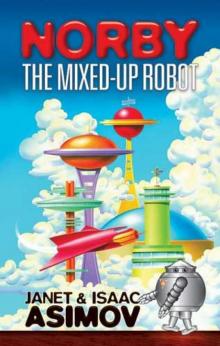 Norby The Mixed-Up Robot
Norby The Mixed-Up Robot Found!
Found! Asimov’s Future History Volume 11
Asimov’s Future History Volume 11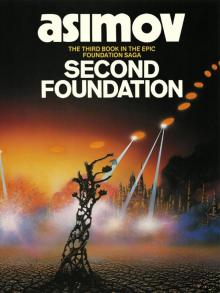 Second Foundation f-5
Second Foundation f-5 Asimov’s Future History Volume 15
Asimov’s Future History Volume 15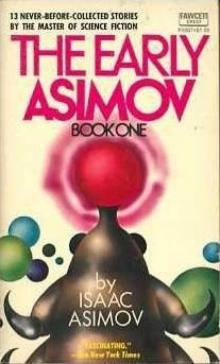 The Early Asimov. Volume 1
The Early Asimov. Volume 1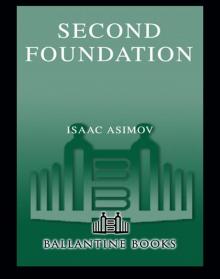 Secound Foundation
Secound Foundation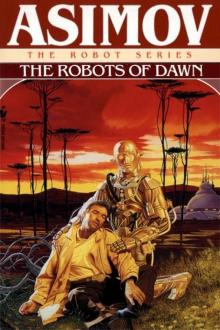 Daneel Olivaw 3 - The Robots of Dawn
Daneel Olivaw 3 - The Robots of Dawn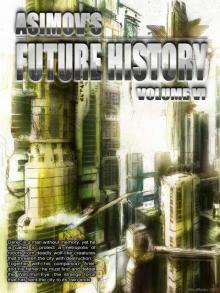 Asimov’s Future History Volume 6
Asimov’s Future History Volume 6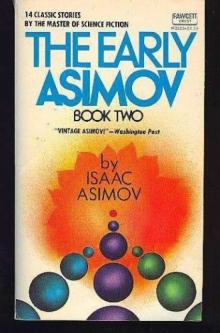 The Early Asimov. Volume 2
The Early Asimov. Volume 2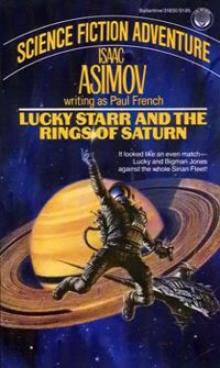 Lucky Starr And The Rings Of Saturn ls-6
Lucky Starr And The Rings Of Saturn ls-6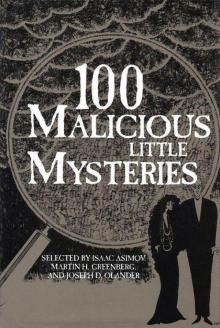 100 Malicious Little Mysteries
100 Malicious Little Mysteries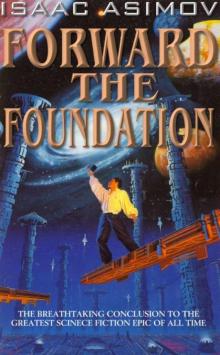 Forward the Foundation f-2
Forward the Foundation f-2 I.Asimov: A Memoir
I.Asimov: A Memoir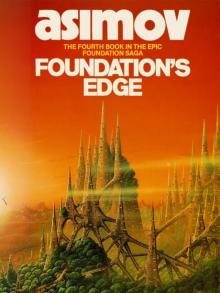 Foundation's Edge f-6
Foundation's Edge f-6 Lucky Starr and the Pirates of the Asteroids ls-2
Lucky Starr and the Pirates of the Asteroids ls-2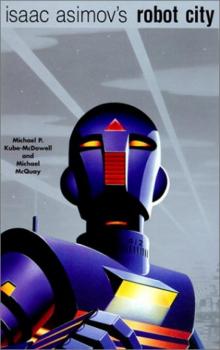 Robot City 1 & 2
Robot City 1 & 2 The Fourth Science Fiction Megapack
The Fourth Science Fiction Megapack Asimov’s Future History Volume 16
Asimov’s Future History Volume 16 The Dim Rumble
The Dim Rumble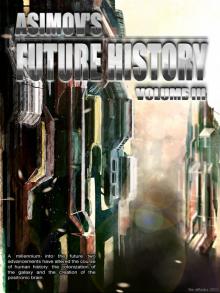 Asimov's Future History Volume 3
Asimov's Future History Volume 3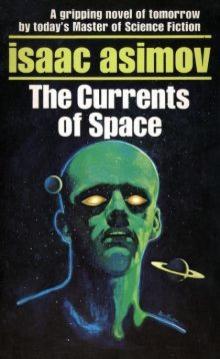 The Currents Of Space te-3
The Currents Of Space te-3 Asimov’s Guide To Shakespear. Volume 1
Asimov’s Guide To Shakespear. Volume 1 Asimov’s Future History Volume 13
Asimov’s Future History Volume 13 Asimov’s Future History Volume 12
Asimov’s Future History Volume 12 The Secret Sense
The Secret Sense Of Time and Space and Other Things
Of Time and Space and Other Things Norby tnc-2
Norby tnc-2 Norby The Mixed-Up Robot tnc-1
Norby The Mixed-Up Robot tnc-1 Misbegotten Missionary
Misbegotten Missionary Asimov’s Future History Volume 19
Asimov’s Future History Volume 19 Fantastic Voyage II: Destination Brain fv-2
Fantastic Voyage II: Destination Brain fv-2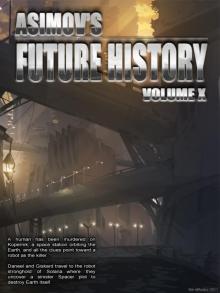 Asimov’s Future History Volume 10
Asimov’s Future History Volume 10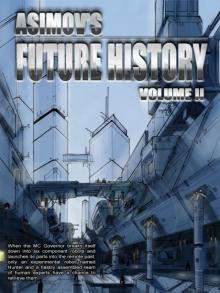 Asimov's Future History Volume 2
Asimov's Future History Volume 2 Feeling of Power
Feeling of Power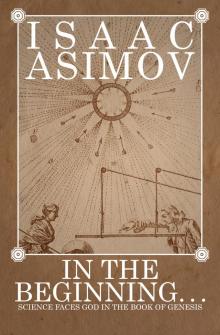 In the Beginning
In the Beginning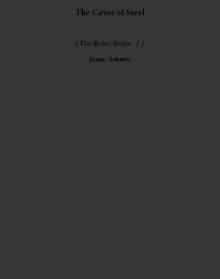 The Caves of Steel trs-1
The Caves of Steel trs-1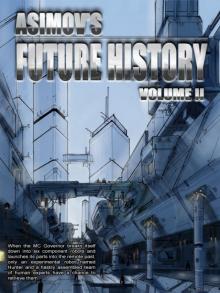 Asimov's Future History Vol 2
Asimov's Future History Vol 2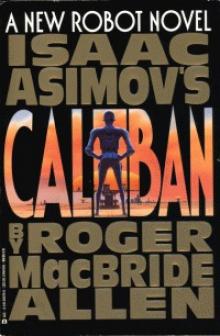 Caliban c-1
Caliban c-1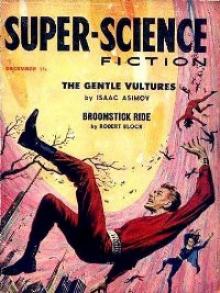 The Gentle Vultures
The Gentle Vultures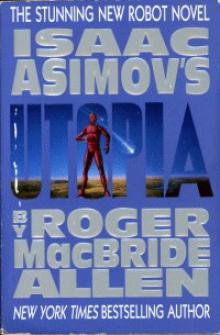 Utopia c-3
Utopia c-3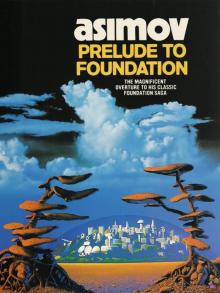 Prelude to Foundation f-1
Prelude to Foundation f-1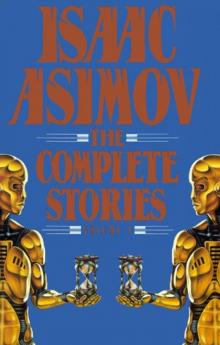 Short Stories Vol.1
Short Stories Vol.1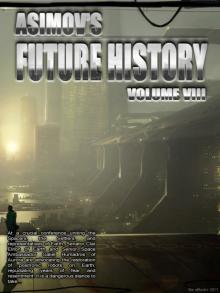 Asimov’s Future History Volume 8
Asimov’s Future History Volume 8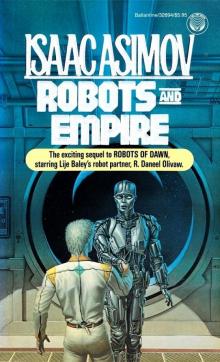 Daneel Olivaw 4 - Robots and Empire
Daneel Olivaw 4 - Robots and Empire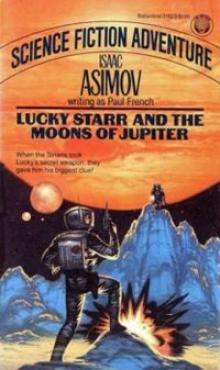 Lucky Starr The And The Moons of Jupiter ls-5
Lucky Starr The And The Moons of Jupiter ls-5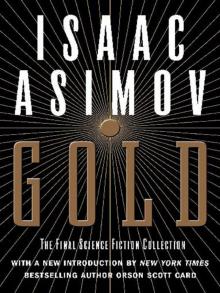 Gold
Gold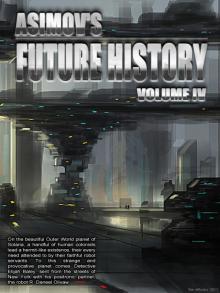 Asimov’s Future History Volume 4
Asimov’s Future History Volume 4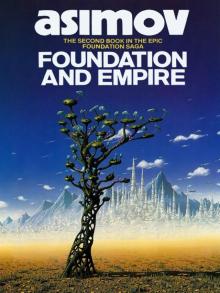 Foundation and Empire f-4
Foundation and Empire f-4 Potential
Potential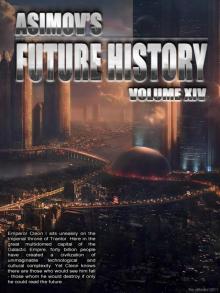 Asimov’s Future History Volume 14
Asimov’s Future History Volume 14 Asimov’s Future History Volume 7
Asimov’s Future History Volume 7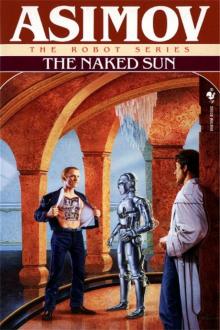 Daneel Olivaw 2 - The Naked Sun
Daneel Olivaw 2 - The Naked Sun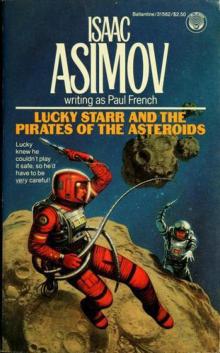 Lucky Starr and the Pirates of the Asteroids
Lucky Starr and the Pirates of the Asteroids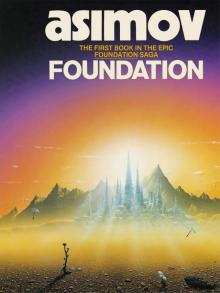 Foundation f-3
Foundation f-3 All the Troubles of the World
All the Troubles of the World Cleon the Emperor
Cleon the Emperor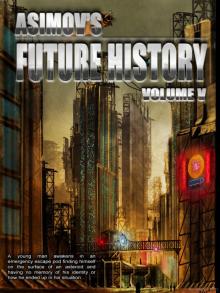 Asimov's Future History Volume 5
Asimov's Future History Volume 5 Asimov’s Future History Volume 20
Asimov’s Future History Volume 20 Robots and Empire trs-4
Robots and Empire trs-4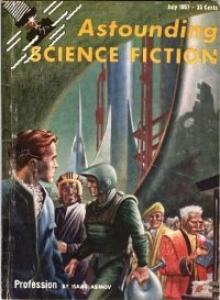 Profession
Profession It's Been a Good Life
It's Been a Good Life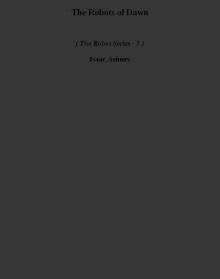 The Robots of Dawn trs-3
The Robots of Dawn trs-3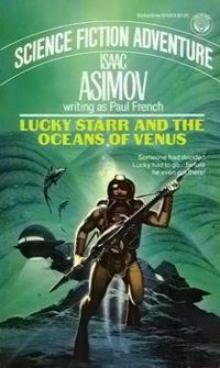 Lucky Starr And The Oceanf Of Venus ls-3
Lucky Starr And The Oceanf Of Venus ls-3 The Naked Sun trs-2
The Naked Sun trs-2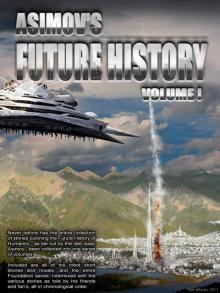 Asimov's Future History Volume 1
Asimov's Future History Volume 1